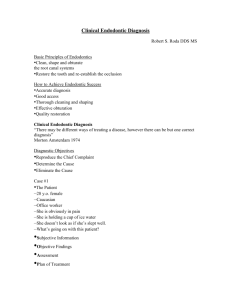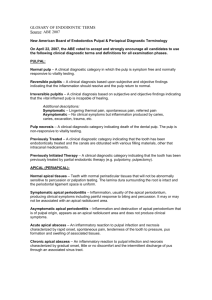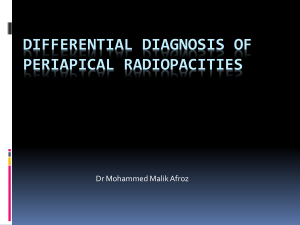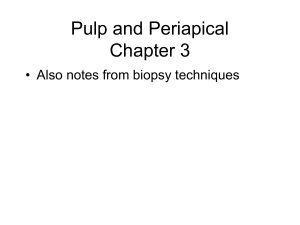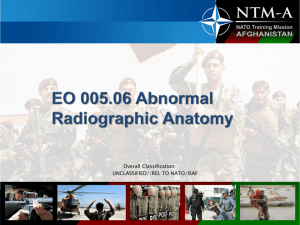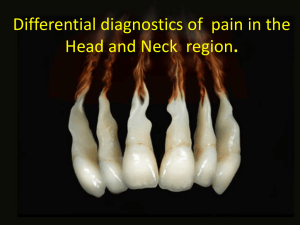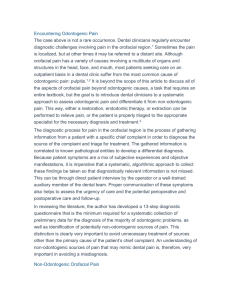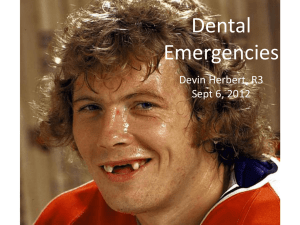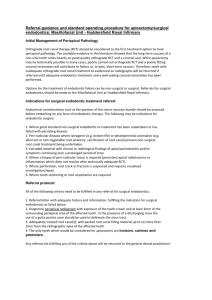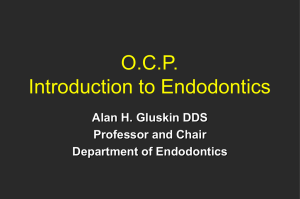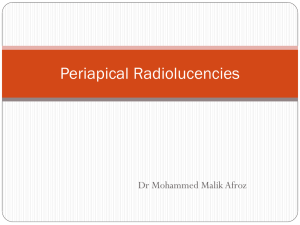Endodontic Diagnosis & Treatment Planning Presentation
advertisement
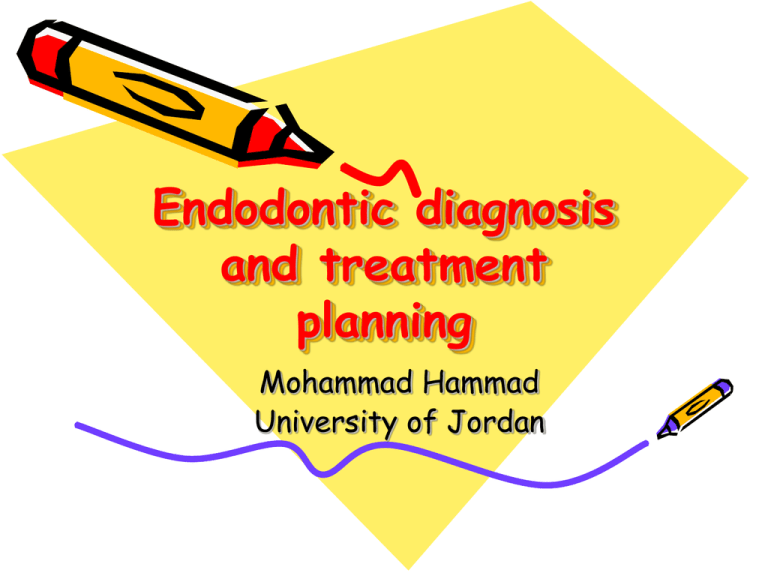
Endodontic diagnosis and treatment planning Mohammad Hammad University of Jordan • Endodontic diagnosis often presents challenges to the practitioner. • Most oro-facial pain is of pulpal or periradicular origin. • Specific diagnostic steps have to be followed in order to reach to a definitive diagnosis and formulate a treatment plan. Ascertain the chief complaint • To be properly documented using patients own words. • Practitioner has to listen carefully, it is usually the first clue to solve the diagnosis riddle! • Many different dental pathosis might be identified. Treat first the one that is causing the chief complaint. Detailed medical and dental history • A must for every patient seeking treatment. • A medical condition can alter the manner the dental care is provided or might have oral manifestations or mimic dental pathosis. • The chronology of events leading up to the chief complaint. • Five areas to be investigated; location of pain, commencement of pain, intensity of pain, provocation and relief of pain, duration of pain. Examinations and testing • Extraoral examination; facial swellings, sinus tracts, lymph nodes enlargement, …etc. • Intraoral examination, swellings, sinus tracts…etc. • Palpation test. • Percussion test. • Mobility test. • Periodontal examination for diagnosis and prognosis. Pulp testing • Vitality or sensibility testing? • Thermal testing; cold and hot. Suspected tooth and control tooth. • Hot water, heated gutta percha or compound, ice sticks, chilled water, EndoIce and EndoFrost. • Electric pulp test. Special tests • Bite test. • Test Cavity. • Selective anesthesia. • Radiographs Clinical classification of pulpal and periapical disease • Pulpal: 1) Healthy pulp. 2) Reversible pulpitis. 3) Irreversible pulpitis; symptomatic and asymptomatic. 4) Necrotic pulp. Clinical classification of pulpal and periapical disease • Periapical: 1) Periapical periodontitis; Acute or chronic. 2) Periapical abscess; acute or chronic. • Periodontal and restorative evaluation should be carried out. • If tooth is not restorable or periodontally un-savable then the tooth should be extracted, even though RCT can be performed! Pain in cold drinks, getting worse with time! Pain when chewing getting worse with time! Accidental finding, no complaint Pain on chewing on the lower right second molar Thank you Any questions?

